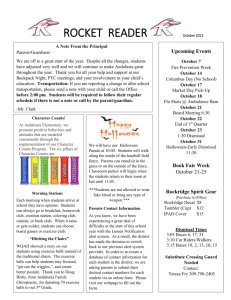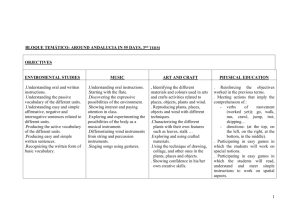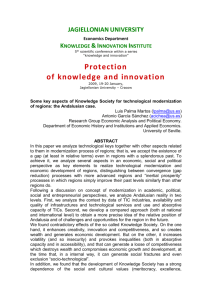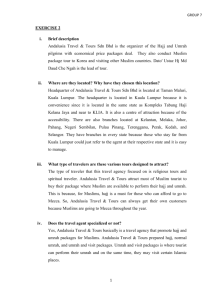“SAN ROQUE” SCHOOL. Bilingual centre. Churriana de la Vega
advertisement
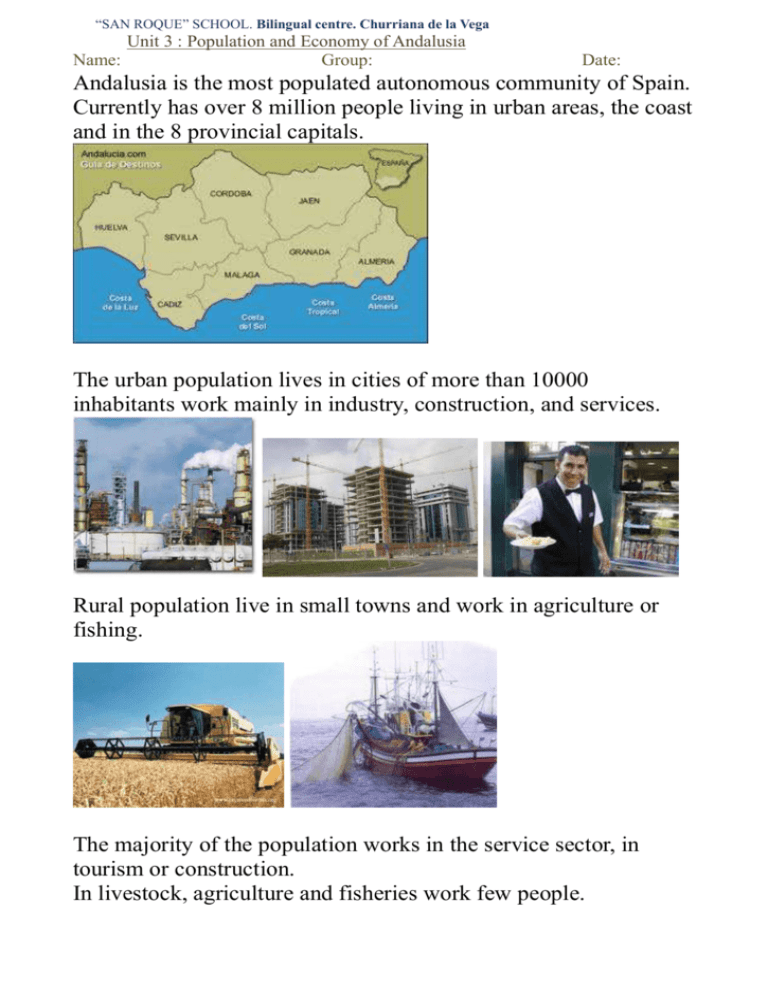
“SAN ROQUE” SCHOOL. Bilingual centre. Churriana de la Vega Unit 3 : Population and Economy of Andalusia Name: Group: Date: Andalusia is the most populated autonomous community of Spain. Currently has over 8 million people living in urban areas, the coast and in the 8 provincial capitals. The urban population lives in cities of more than 10000 inhabitants work mainly in industry, construction, and services. Rural population live in small towns and work in agriculture or fishing. The majority of the population works in the service sector, in tourism or construction. In livestock, agriculture and fisheries work few people. “SAN ROQUE” SCHOOL. Bilingual centre. Churriana de la Vega Unit 3 : Population and Economy of Andalusia Name: Group: Vocabulary population; working population: non-working population: city: town: primary sector: secondary sector: service sector: population density: rural population: urban population: domestic trade foreign trade: road transport air transport: Date: agricultura: pesca: ganadería: industria: construcción: turismo: aeropuerto: transporte: tren: olivo: trigo: cebada: comida: bebida: quimicos ( productos): 1.-Write T for true and F for False in the following senteces. Andalusia is the most crowded autonomous region in Spain The numbers of inhabitans is higher than the rest os the Spanish country More than half of the population live in Sierra Morena The rural population live in villages with more than 10.000 inhabitans Most of the andalusian population is concentrated on the provincies The mountains areas are more crowded than the “Costa del sol” The population density refers to the number of inhabitans in a km2 2.- Relate the following andalusian places with the tourist services. The Alhambra Beach tourism Picasso museum Costa del Sol Heritage tourism Cazorla mountains Donaña Nature tourism Costa de la luz “SAN ROQUE” SCHOOL. Bilingual centre. Churriana de la Vega Unit 3 : Population and Economy of Andalusia Name: Group: Date: THE PRIMARY SECTOR The primary sector in Andalusia, is becoming less important and is divided into livestock, agriculture and fishing. We in agriculture; rainfed and irrigated crops: - Rainfed crops include: olives, grain and vines. - Irrigated crops: vegetables, fruits and industrial crops. THE SECONDARY SECTOR The secondary sector in Andalusia include industry and construction. - The leading industrial sectors in our community: - Chemicals. - Sector of the food, drinks and snuff. - Metal products - Non-metallic mineral products. and construction. Industry is located at: mainly in Seville, Cadiz and Malaga, Bay of Cadiz (aeronautics, and automotive) and Campo de Gibraltar (Food and Chemistry) THE SERVICE SECTOR The services sector meets the social needs of people: trade, health, tourism, transport, education ... Tourism in Andalusia is very important, as we visit more than 18 million people a year. We have much and different works in hotels, restaurants, golf courses, ports, airports, etc. Is very important land transportation for passengers and Merchandise. Andalusia transport may be by road, rail, air or by sea. “SAN ROQUE” SCHOOL. Bilingual centre. Churriana de la Vega Unit 3 : Population and Economy of Andalusia Name: Group: Date: Population of Andalusia It is grow because are concentrated in Our mortality and higher birth rate life expectancy, and arrival of immigrants the provincial capitals Cadiz and Gibraltar. Primary sector Industry - fishing - - Tourism - other services administration Complete with the unit a with the conceptual map: Andalucia's population has grown by .............................., ……………...... and ……………...... Andalucia's population is concentrated in the ...................., …………….. ...... and ................................ In the primary sector works ................% of people. The secondary sector is divided into .............................. and ........................ The ....................... is the sector employs more people. its main activities are …………............., ............................., and ............... ........
